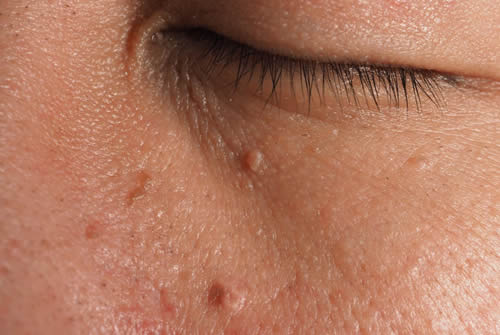Skin tags are usually harmless skin growths that look like a small piece of skin hanging from the body. These common noncancerous growths contain collagen inside, a natural protein in your body that is linked to healthy skin. They are typically soft and develop in natural creases of the body like the neck, underarms, eyelids, or groin. Although they are not dangerous, some people choose to have them removed.
Causes
The most likely cause of skin tags is friction from movement or clothing that creates excess skin growths in that area. Although they can happen to anyone, some known increased risk factors are obesity, pregnancy, hormone imbalance, Type 2 diabetes, or human papillomavirus (HPV) infection. Skin tags are more common in women than men. Those with family members with a history of skin tags also have a higher likelihood of developing them.
Evaluation
If skin tags are bothersome or if they change in appearance, seeing a qualified dermatologist like Dr. Bernard Raskin in Bakerfield is a good idea. This is especially true if your skin tag bleeds, causes pain, changes color, or increases in size. You might also want to seek skin tag removal if it is in a location that gets hung on jewelry or clothing or is embarrassing to you.
Removal
The ideal removal method depends on the size and location of the skin tag. Some common techniques include:
- Cutting: using a scalpel or sharp scissors to snip the skin tag off
- Freezing: applying liquid nitrogen to freeze the skin and destroy the skin tag
- Burning: using an electrocautery tool to burn off the tag to remove it and avoid damaging nearby skin
Do not try to remove skin tags on your own at home. Over the counter treatments are often not effective and some can be harmful to your skin. Cutting off a skin tag yourself may cause bleeding and liquid applications can burn your skin or cause scarring. Instead, seek professional care from a physician like Dr. Bernard Raskin for the best treatment for your skin tag.
Schedule an appointment today.

